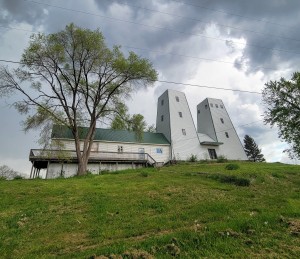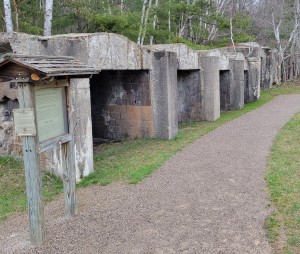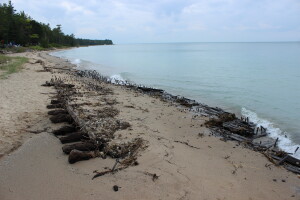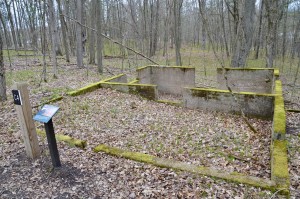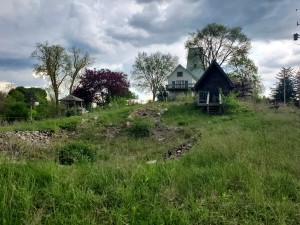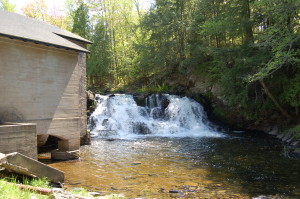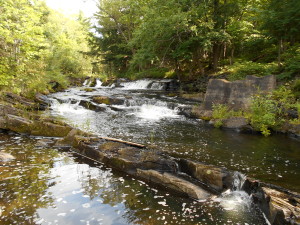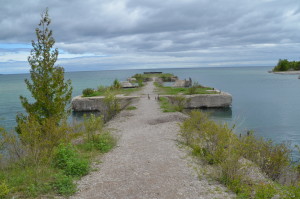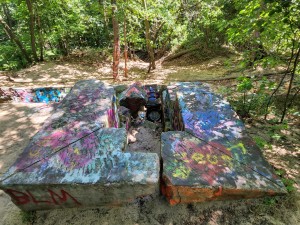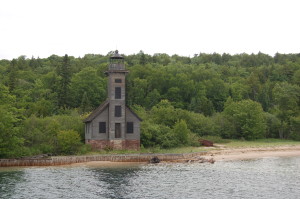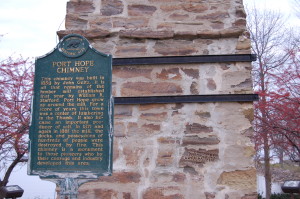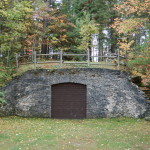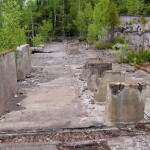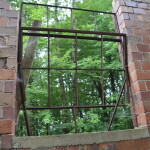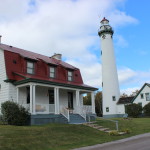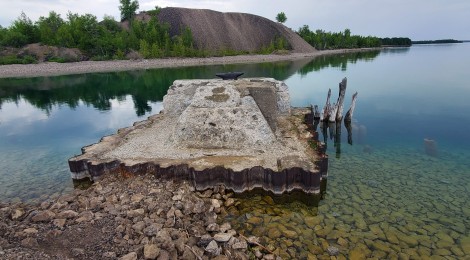
10 Michigan Abandoned Places and Ruins Worth Checking Out: Part 4
Abandoned places and ruins continue to fascinate travelers, as they provide a window into the past as well as some amazing pictures. Many Michigan abandoned places and ruins sites are easy to find and visit, and we have been fortunate enough to have the chance to see many of them in person. While we are always looking to explore sites we haven’t yet been to, we decided to take a minute to highlight some of the amazing ones we have been to in this list. In January we shared our fist list of 10 Michigan Abandoned Places and Ruins Worth Checking Out and then we shared 10 More Michigan Abandoned Places and Ruins Worth Checking Out, sharing pictures from our visits and letting you know how you can visit too. We followed that up with our incredibly popular 10 Michigan Abandoned Places and Ruins Worth Checking Out, Part 3. All three of these posts were among our most-viewed articles in 2022! Now we return with 10 Michigan Abandoned Places and Ruins Worth Checking Out: Part 4 featuring 10 more sites. When visiting any of these sites it is important to respect private property and to “leave nothing but footprints, take nothing but pictures.” We hope you enjoy this list and we hope to be back soon with a list of 10 more incredible sites.
Alligator Hill Kilns (Sleeping Bear Dunes National Lakeshore) – we stumbled upon these while checking out one of the few hiking trails we hadn’t yet been to at Sleeping Bear Dunes National Lakeshore. The Alligator Hill Trail travels 1.5 miles through a forest of maple and beech trees before it reached the Islands Lookout, which provides a stunning view of Lake Michigan and the Manitou Islands. A National Park Service sign near the parking lot explains what the curious structures at the trailhead are: “These concrete structures are charcoal kilns, and they were installed by lumberman Pierce Stocking who purchased the land in 1948 after the demise of Day Forest Estates. He used these kilns to convert the waste from his sawmill into charcoal. The loose, dusty, random-sized material was packed in bags for shipment to stores in much of Michigan for sale to campers and picnickers. The kilns are concrete ovens in which limbs, slabs, and other sawmill waste were stacked as tightly as possible. The open front was closed with concrete blocks and the wood set on fire just before the last blocks went in. Controlling the air intake was tricky: too much air and the wood was consumed, too little air and the fire went out. If successful, the fire burned slowly for several days. Once it was out, the charcoal was removed and spread to cool. Then it was moved to the bagging shack.”
Joseph S. Fay shipwreck, (Lighthouse Park north of Rogers City) – There are not many shipwrecks in Michigan that are as easy to visit as the Joseph S. Fay. You won’t need diving equipment or a boat to see the remains of this early-1900s wooden steamer. A short trail that starts near the 40 Mile Point lighthouse leads to the remains of a good portion of the boat on the sandy Lake Huron beach.
Loda Lake National Wildflower Sanctuary (White Cloud) – We visited this Huron-Manistee National Forest site in 2022 looking for flowers and wildlife, so we were surprised to find out this preserve also features the ruins of an early farm and the studio of artist Albert Schmidt. There is a $5 day use fee for this site, which features “includes a small spring-fed lake, a bog-like wetland area, a creek and riparian marshy areas, oak forest, and pine plantations.”
Irish Hills Towers (Lenawee County) – These two towers were once the definition of roadside attraction. Early travelers on the road could stop and take in the views from the top and stock up on souvenirs. It all started here with one tower, then a second competing tower was built, then the towers were connected. Closed to the public in 2000, the Irish Hills towers and the surrounding grounds have fallen in to a state of disrepair and things are in a bit of a holding pattern as a local historical society tries to keep complete demolition from happening.
Powerhouse Falls and Power Dam Falls (L’Anse) – We love waterfalls and sometimes come across some interesting things when we visit them. The Falls River in L’Anse has many great scenic drops but two in particular will interest fans of abandoned places. Powerhouse Falls is a six foot drop next to an old abandoned power house (do not enter) and Power Dam Falls upstream cascades over the remains of an old dam. It has clearly been some time since the river was used for power generation but seeing what remains is an interesting reminder that life here used to be quite different.
Rockport (north of Alpena) – This Michigan state recreation area centers around the remains of an old limestone quarry. Fossil hunters love digging through the piles of rocks here, and the trails offer a glimpse into what was once the site of an operation that provided the limestone that was used as base material to support the towers of the Mackinac Bridge. Rockport State Recreation Area is one of Northern Michigan’s best abandoned sites to visit, and you’ll find yourself wanting to come back!
Sanctuary Woods Preserve (Holland) – There was once a rusted old water tower at the top of the dunes at Sanctuary Woods Preserve in Holland, but an Eagle Scout project helped clean that up in 2009. Today visitors will still see some concrete foundations covered in graffiti when they reach the top of the trail where it overlooks Lake Macatawa.
Grand Island East Channel Lighthouse (Munising) – One of Michigan’s most picturesque lighthouses sits across from the Pictured Rocks National Lakeshore on Grand Island, exposed to the harsh weather conditions of the area since the 1860s. The light served until the 1910s, and after many years of abandonment and neglect it came very close to being lost forever. Now under private ownership, the Grand Island East Channel Lighthouse has been restored enough that it will survive, and while the area surrounding it remains off limits to the public it can be viewed from the Pictured Rocks Cruises, Riptide Ride, or Glass Bottom Shipwreck Tours boats.
Portland Shipwreck (Besser Natural Area) – The second shipwreck to appear on this list takes a little bit of work to get to but we promise it is worth the effort. The Besser Natural Area not only features the ruins of the ghost town of Bell (featured in part 3 of this series) but also has a beach where you can launch a kayak to check out the ruins of the Portland shipwreck. From the Thunder Bay National Marine Sanctuary: “Built in 1863, the 150-foot Portland carried bulk cargo across the Great Lakes for 14 years. Loaded with 300 tons of salt, the two-masted schooner encountered a fierce Lake Huron storm in October 1877. The gale drove Portland ashore, where relentless waves and jagged rocks tore the schooner to pieces. The entire crew survived; Portland was a total loss. Today, snorkelers, paddlers, and divers can explore the scattered remains of Portland in Lake Huron’s clear water. A seasonal mooring buoy marks the 130-foot main section of the wreck, the schooner’s lower hull and starboard side. This wreckage rests in just six feet of water, about 100 yards from the beach. Another large section of the wreck, the stern section, rests in a few feet of water in a naturally formed lagoon just north of the main trail to the beach.”
Port Hope Chimney – Port Hope is a small village in Michigan’s Thumb region, and here on the shore of Lake Huron the Port Hope Chimney stands tall as a reminder of the industry that thrived here many years ago. From the Michigan historical marker: “This chimney was built in 1858 by John Geitz. It is all that remains of the lumber mill established that year by William R. Stafford. Port Hope grew up around the mill. For a score of years this town was the center of lumbering in the Thumb. It also became an important producer of salt. In 1871 and again in 1881 the mill, the docks, and possessions of hundreds of people were destroyed by fire. This chimney is a monument to those pioneers who by their courage and industry developed this area.”

